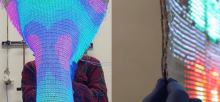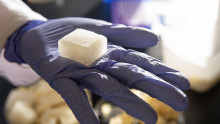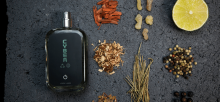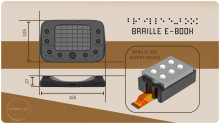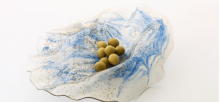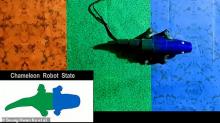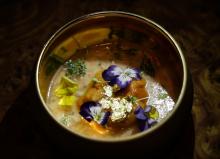innovation
Robots on Beijing Winter Olympics
A textile-based smart display
Environmentally friendly ‘Jelly Ice Cube’ Could Transform Cold Storage
Researchers at the University of California, Davis, have developed a new type of cooling cube that could revolutionize how food is kept cold and shipped fresh without relying on ice or traditional cooling packs.
These plastic-free, “jelly ice cubes” do not melt, are compostable and anti-microbial, and prevent cross-contamination.
“When ice melts, it’s not reusable,” said Gang Sun, a professor in the Department of Biological and Agricultural Engineering. “We thought we could make a so-called solid ice to serve as a cooling medium and be reusable.”
German Beauty Studio Develops a Digital Fragrance
Braille e-book concept makes online reading more accessible
Texts can be downloaded from a range of sources for translation into Braille
Russian engineering student Aleksei Rezepov’s Braille e-book concept is a national finalist in the 2021 James Dyson Award. The book allows people with limited or no sight to read a range of online materials without depending on audio translations. Audio options are generally limited to a small range of content and simply don’t work for people with multiple disabilities.
Startup creates mouldable and circular material from olive pits
The material is highly economical and has been prototyped to create toys, lamps and kitchenware
Barcelona based Naifactory Lab are using a bio-compostable material made from olive pit to prototype toys, lamps and kitchenware. The material, “Reolivar”, is highly economical and can also be easily moulded at low temperatures.
3 inches chameleon-inspired robot changes colour in real time
A soft robot that can change colour in real-time to match its background like a chameleon could pave the way to new forms of military camouflage.
The 'artificial chameleon skin' that covers the segmented back of the walking plastic-bodied robot was developed by a team led from the Seoul National University.
Built to resemble the animal, the little walking robot is 1 foot and 3 inches (38 cm) long, some six inches (15 cm) wide and weighs in at 2 lbs (0.9 kg).
EPO announces winners of the European Inventor Award 2021
The European Patent Office (EPO) today announced the winners of the European Inventor Award 2021, its prestigious annual innovation prize. The individuals and teams were recognised for their innovative contributions in the fields of nasal drug delivery, DNA-based data storage, nanomaterials in dentistry, solar cells for self-charging devices, organic semiconductors, and advances in tissue engineering.
Holograms Make Tasty Addition To Food Safety
News that holograms could be ‘printed’ on food shows how innovation continues to push the technology’s boundaries, says the International Hologram Manufacturers Association.
The move follows reports from the USA that scientists have moulded edible holograms onto chocolate. Although it’s early days, and the process only works for certain types of confection, the development could open-up a host of exciting future possibilities around the control and labelling of food, says the IHMA.


